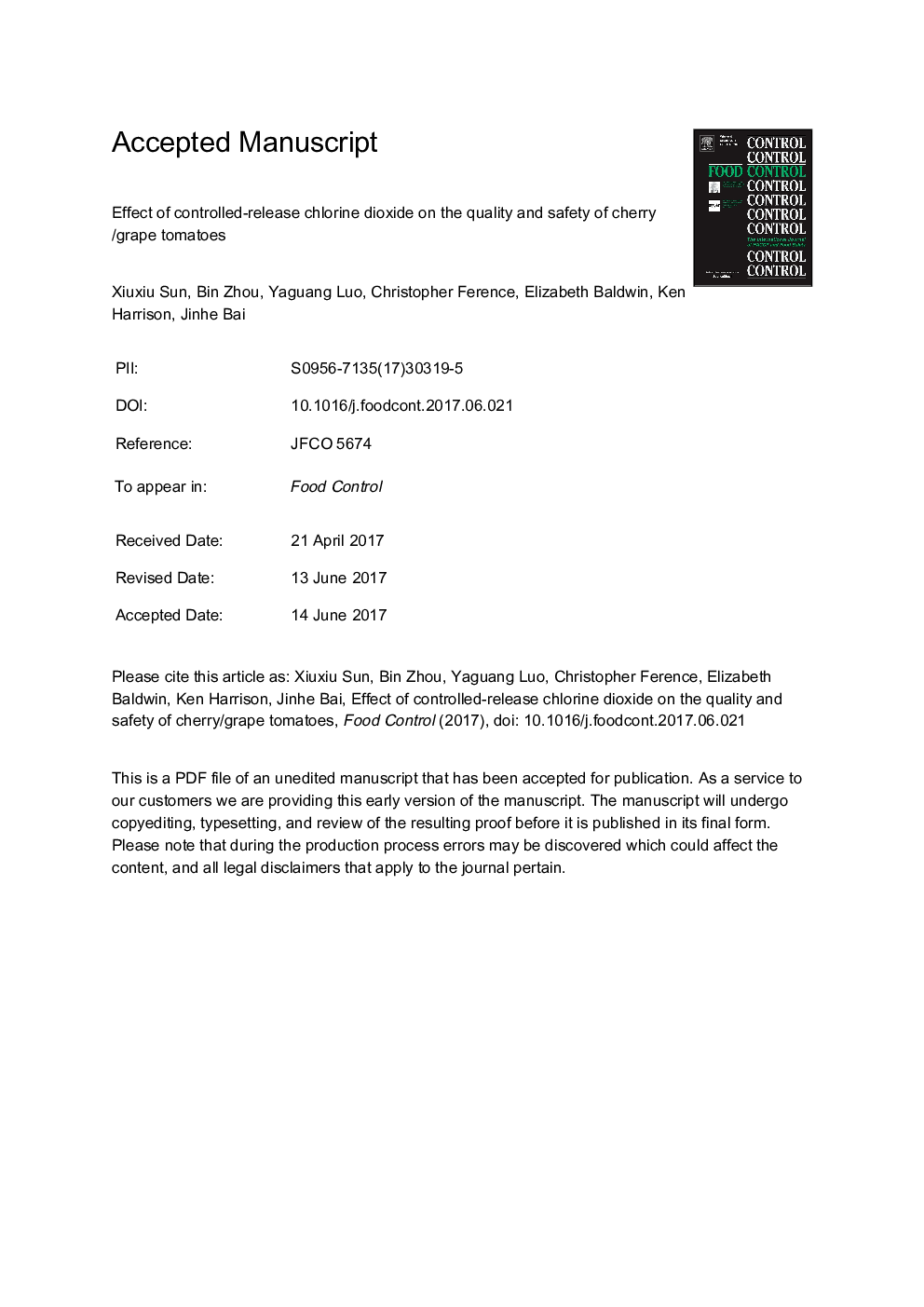| Article ID | Journal | Published Year | Pages | File Type |
|---|---|---|---|---|
| 5767130 | Food Control | 2017 | 24 Pages |
Abstract
The effect of controlled-release chlorine dioxide (ClO2) gas on the food safety and quality of cherry/grape tomatoes was investigated. Whole grape tomatoes artificially inoculated with either Escherichia coli or Alternaria alternata, or whole cherry tomatoes inoculated with Salmonella enterica Newport, were packed in 1-lb clamshells, and stored at 20 °C for 14 days. ClO2 pouches were attached under the lids with the following four dosages/release rates: single dose slow-release (S), single dose fast-release (F), fast/slow-release combination (FS), and double dose fast-release (FF). The corresponding equilibrium ClO2 concentration in the headspace was about 2, 4, 6 and 8 ppm, respectively. Treatment with F reduced populations of E. coli and A. alternata by 2.9-4.7, and 1.6 to 4.0 log CFU/g, respectively, within 14 days storage at 20 °C. FS and FF treatments showed little benefit over F. The F and FF treatments reduced population of S. enterica for inoculated cherry tomatoes by 3.28 and 3.80 log CFU/g, respectively, compared to control after 14 days' storage at 20 °C. ClO2-treated grape tomatoes retained higher firmness and had less weight loss compared to the control. The results indicate that 2 ppm of ClO2 (S) in the clamshells did not adequately control microbial populations; the minimum effective concentration of ClO2 was 4 ppm (F). Higher concentrations provided a small but incremental improvement in ability to control microorganisms. ClO2 released into packages of cherry tomatoes during storage reduced weight loss, while maintaining firmness.
Keywords
Related Topics
Life Sciences
Agricultural and Biological Sciences
Food Science
Authors
Xiuxiu Sun, Bin Zhou, Yaguang Luo, Christopher Ference, Elizabeth Baldwin, Ken Harrison, Jinhe Bai,
